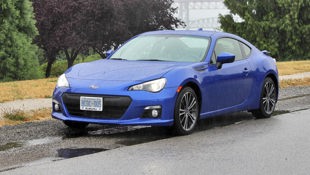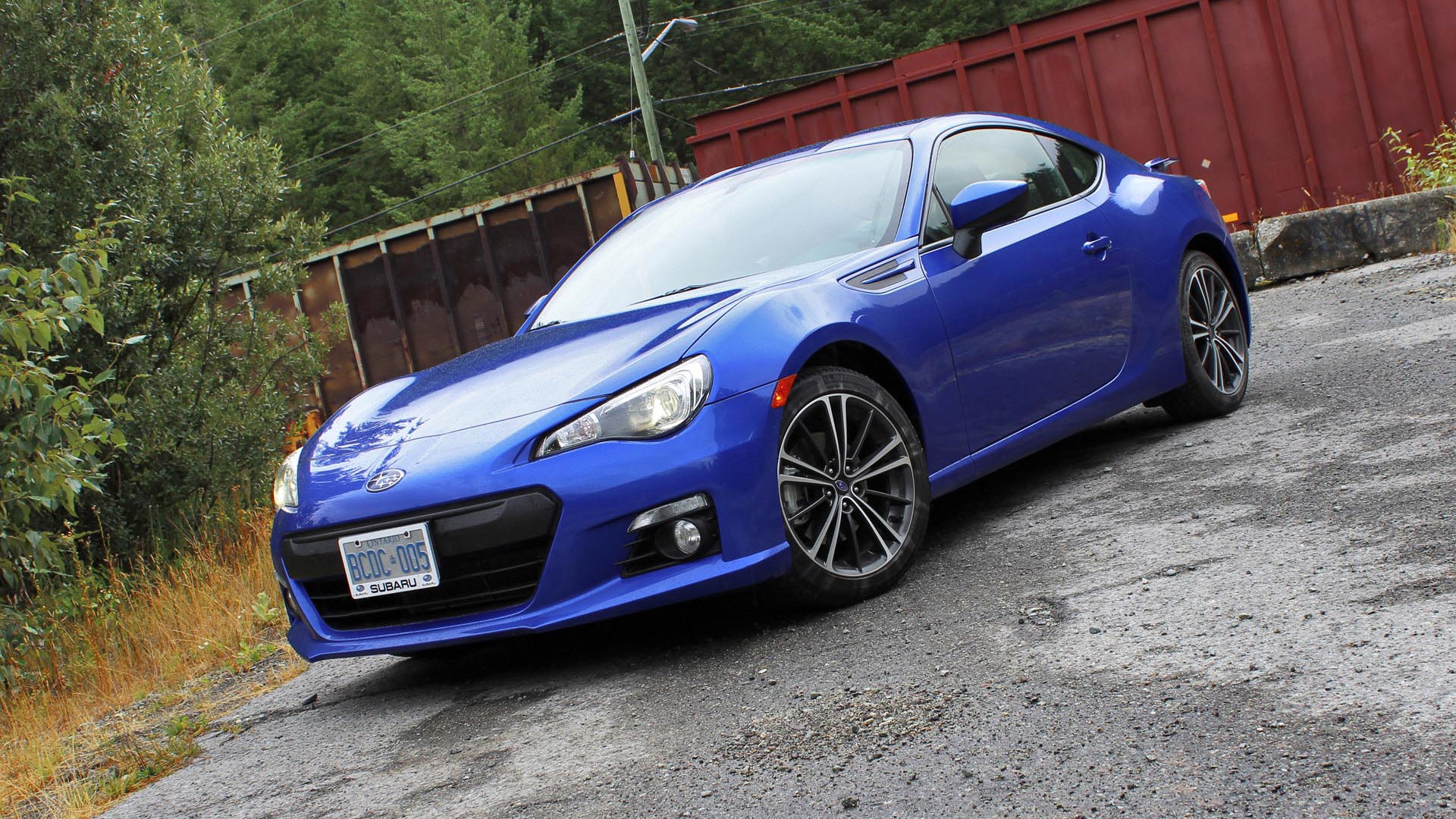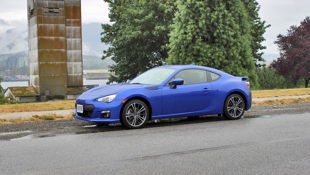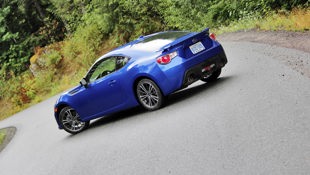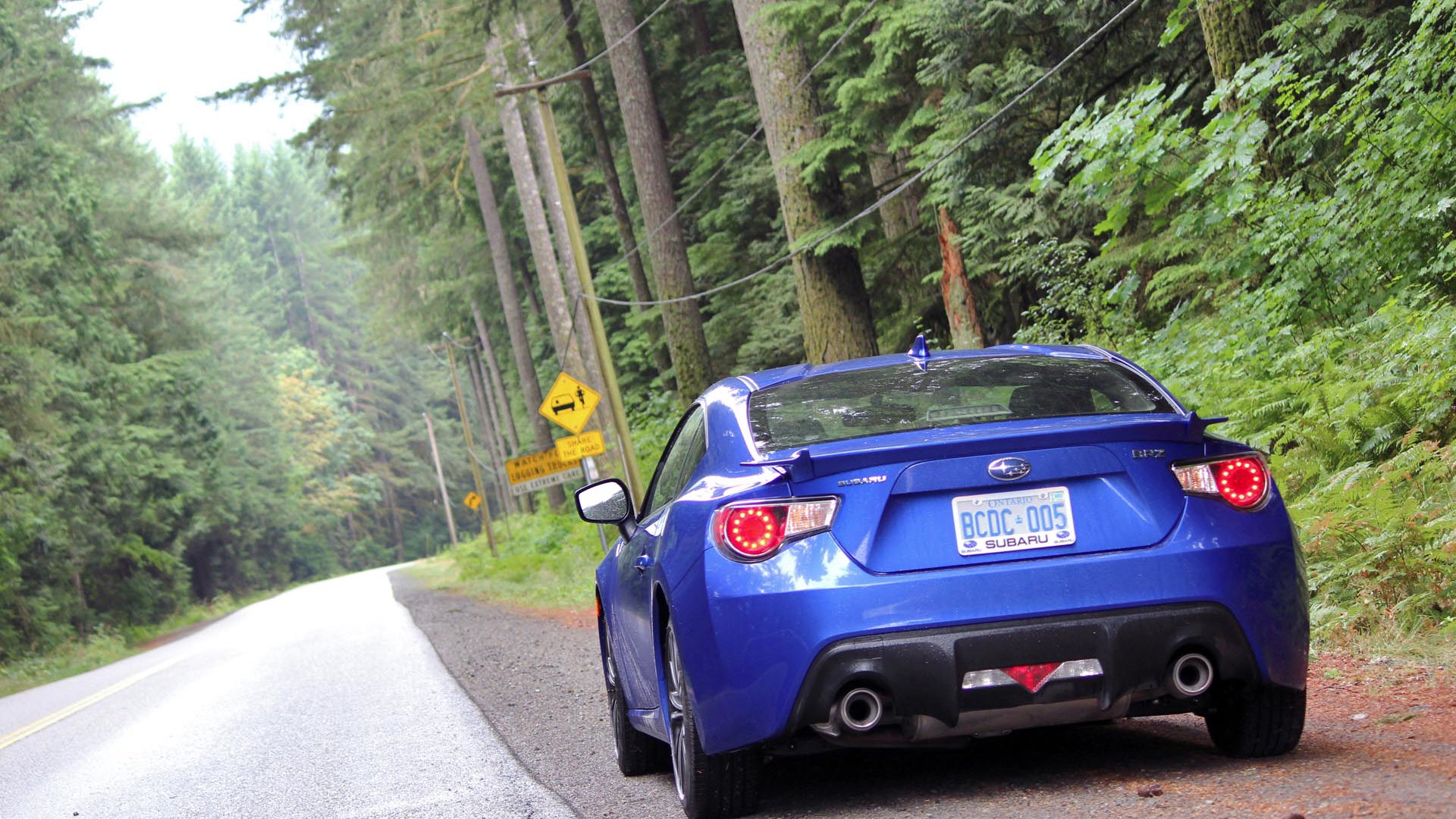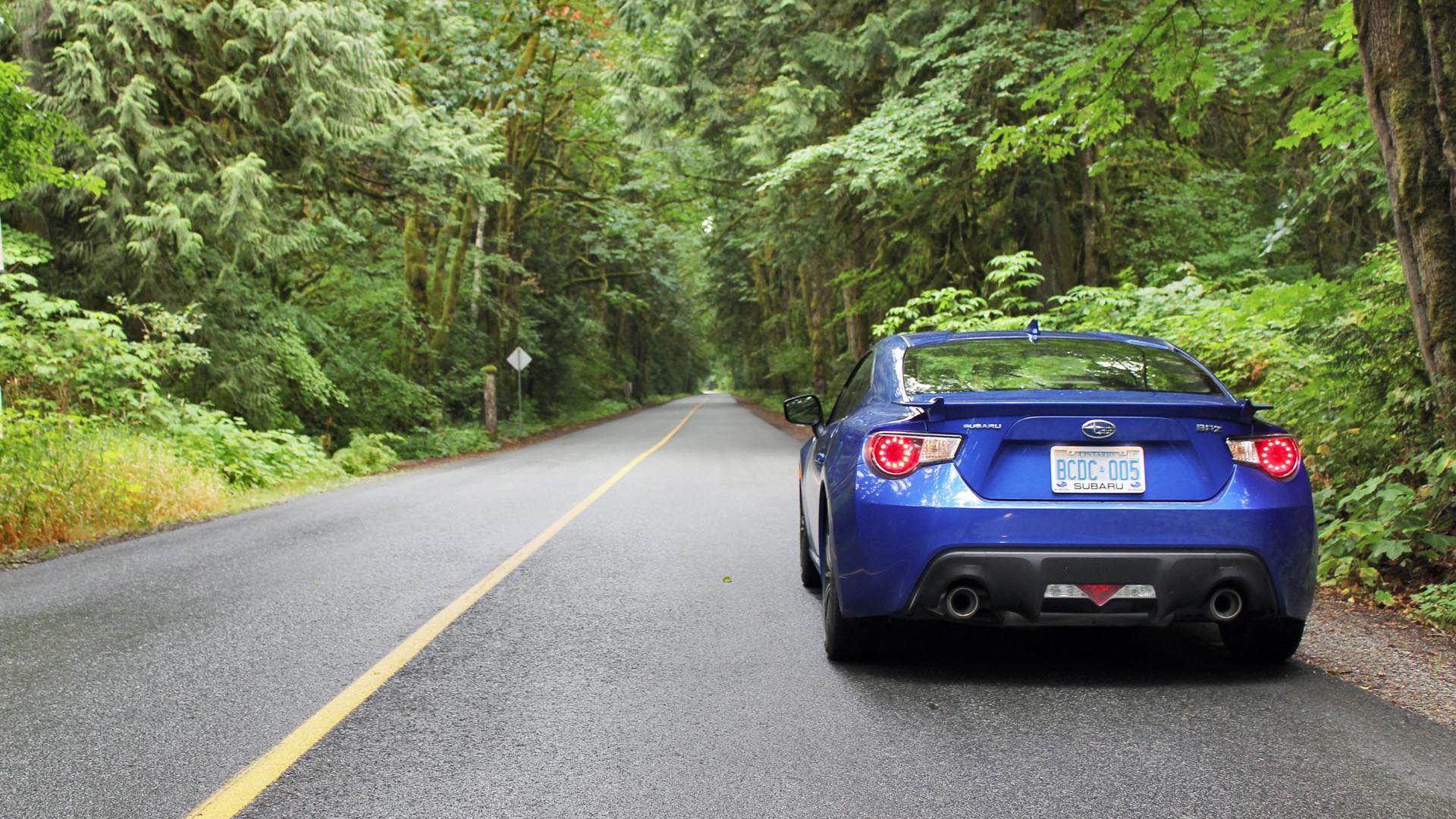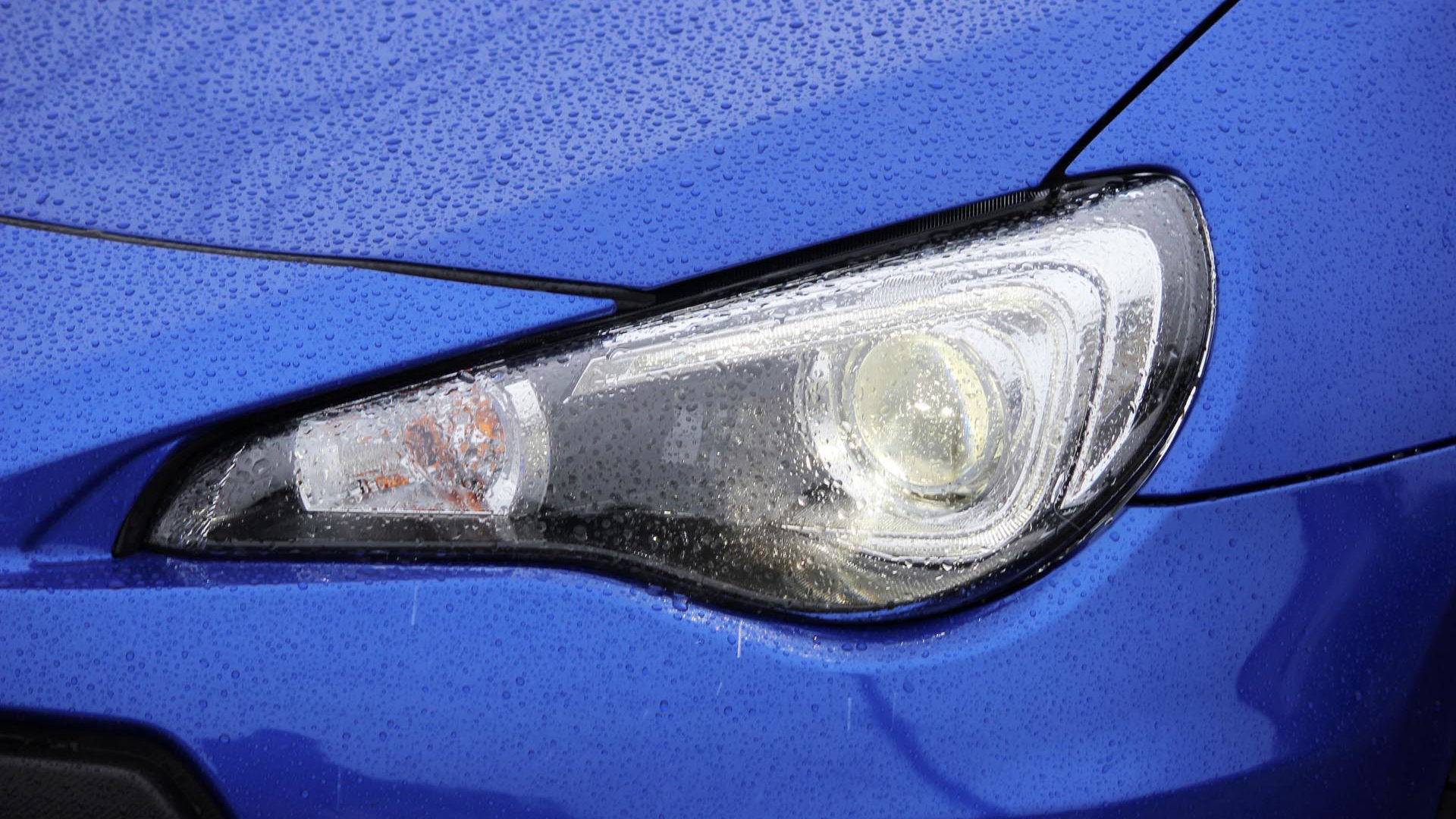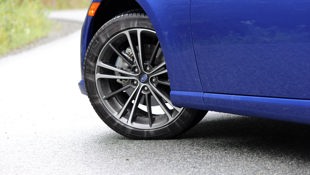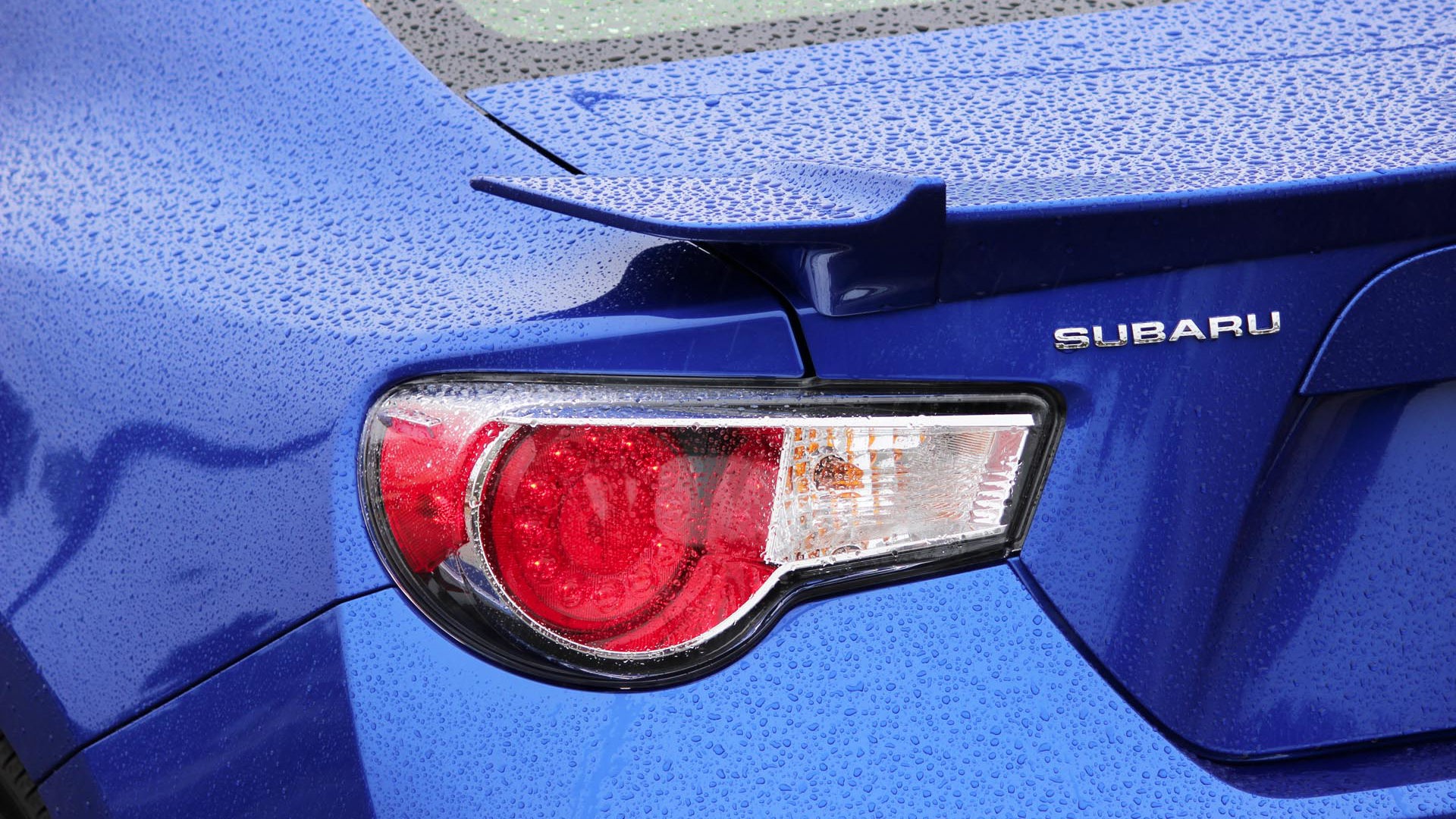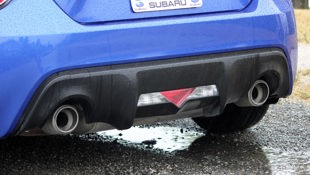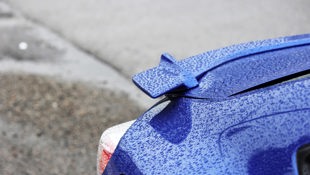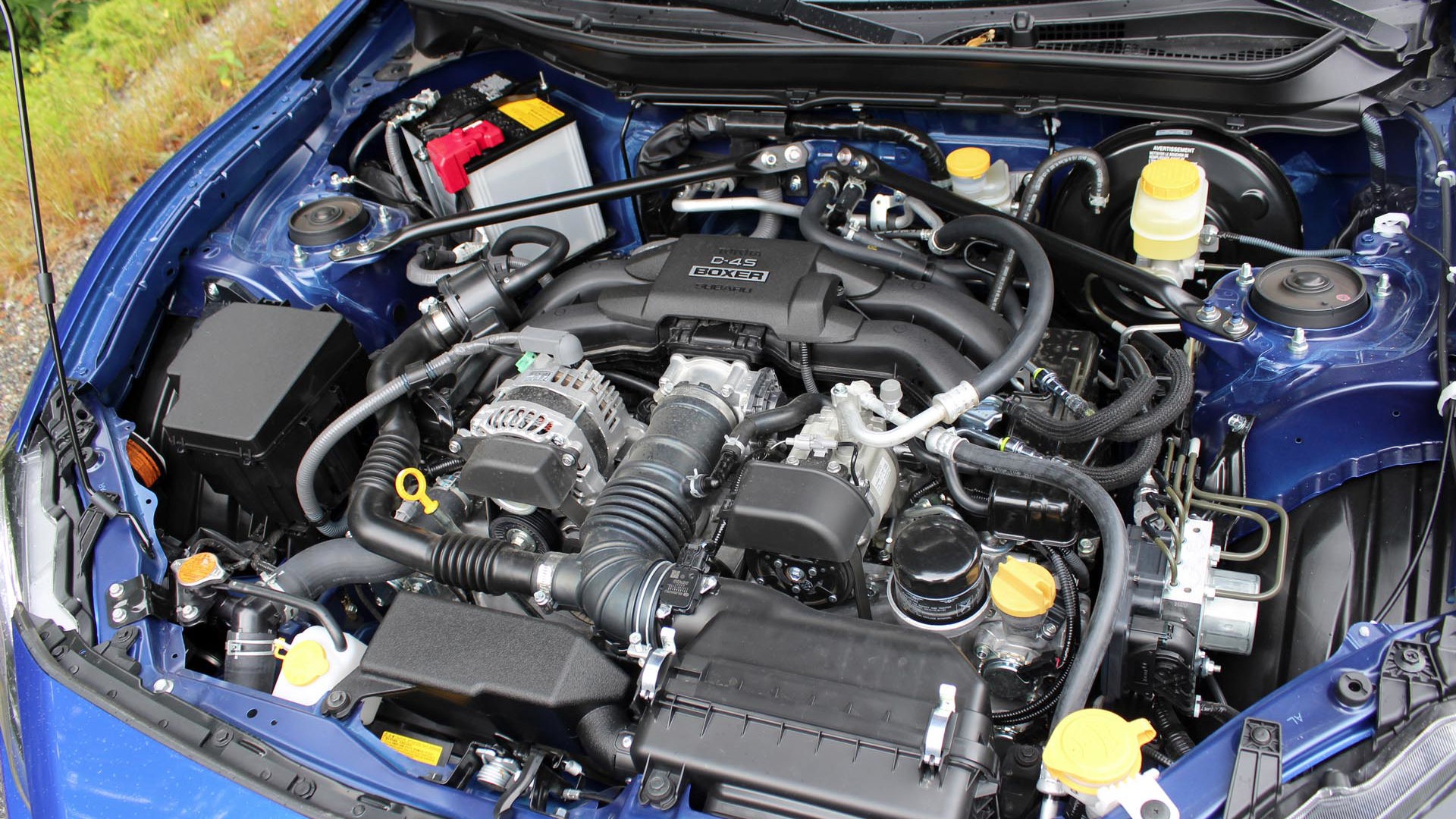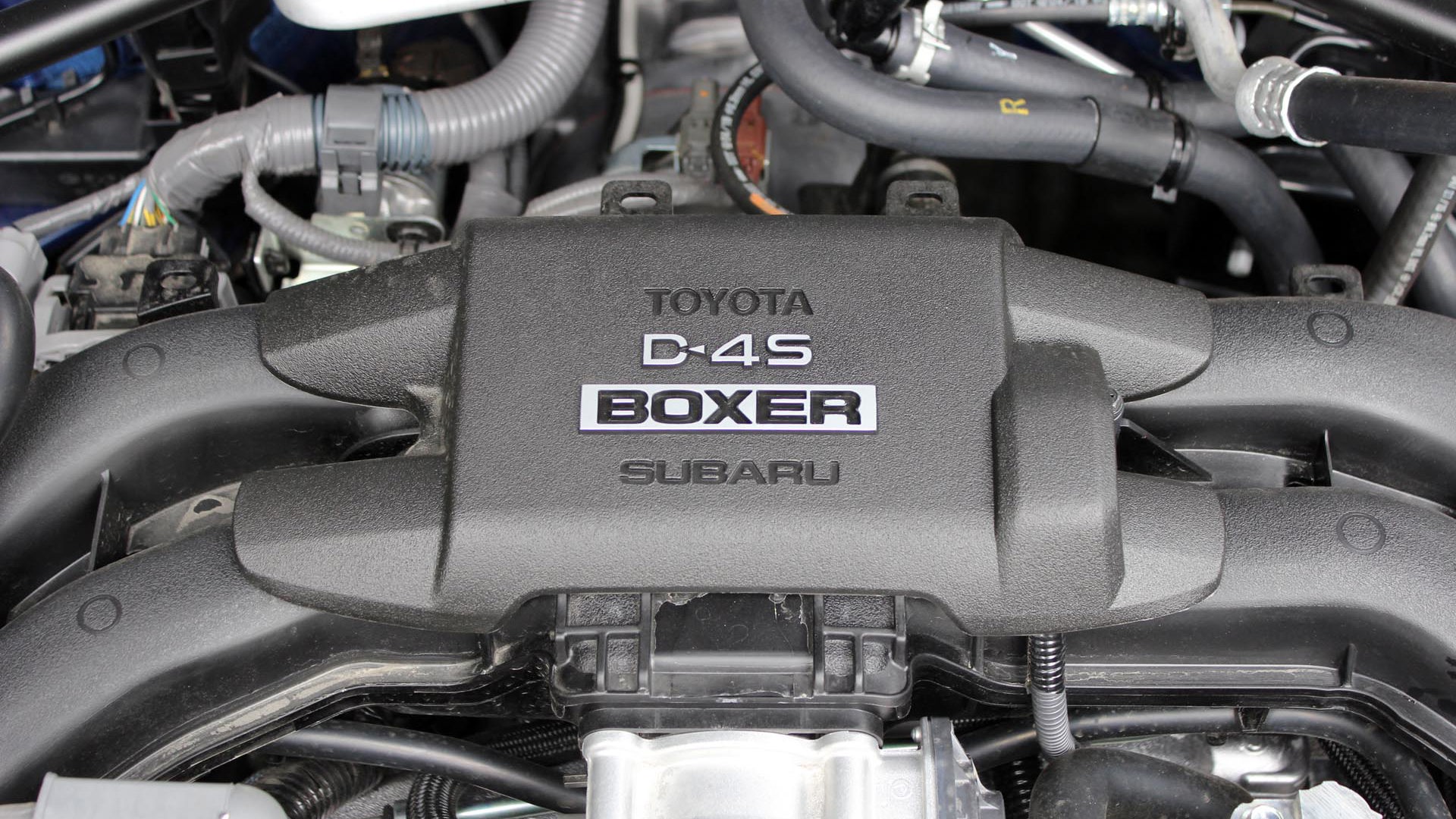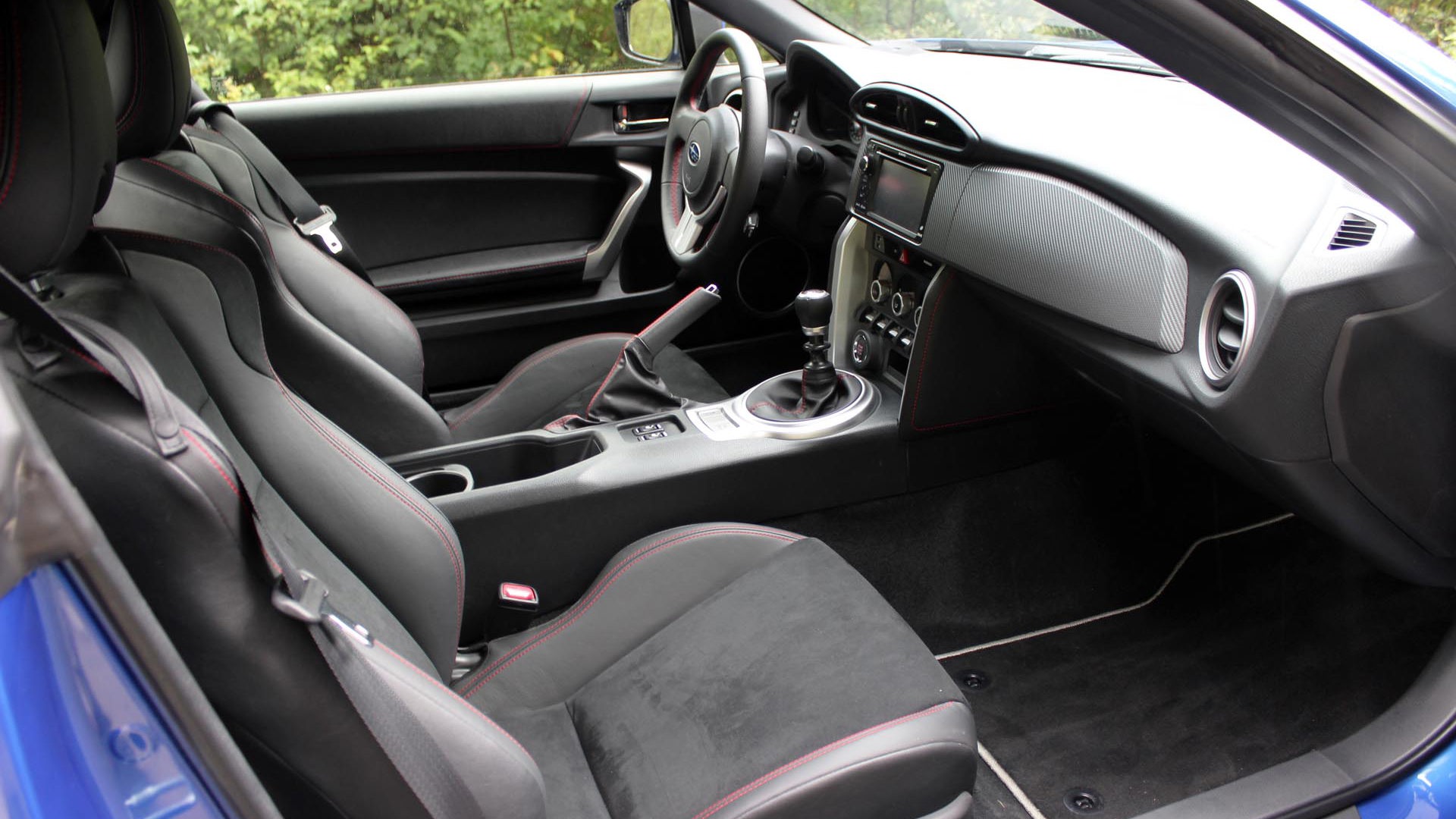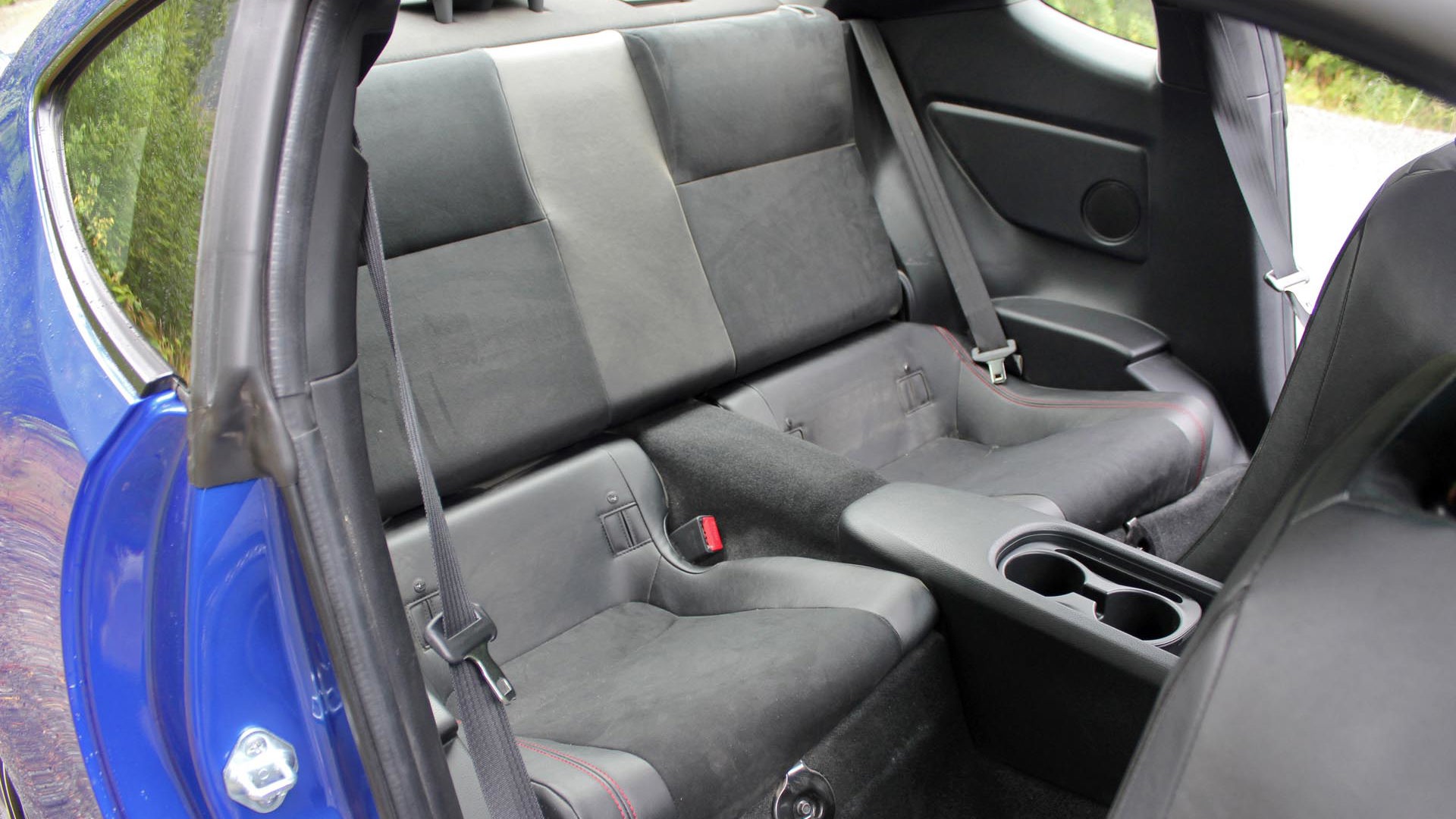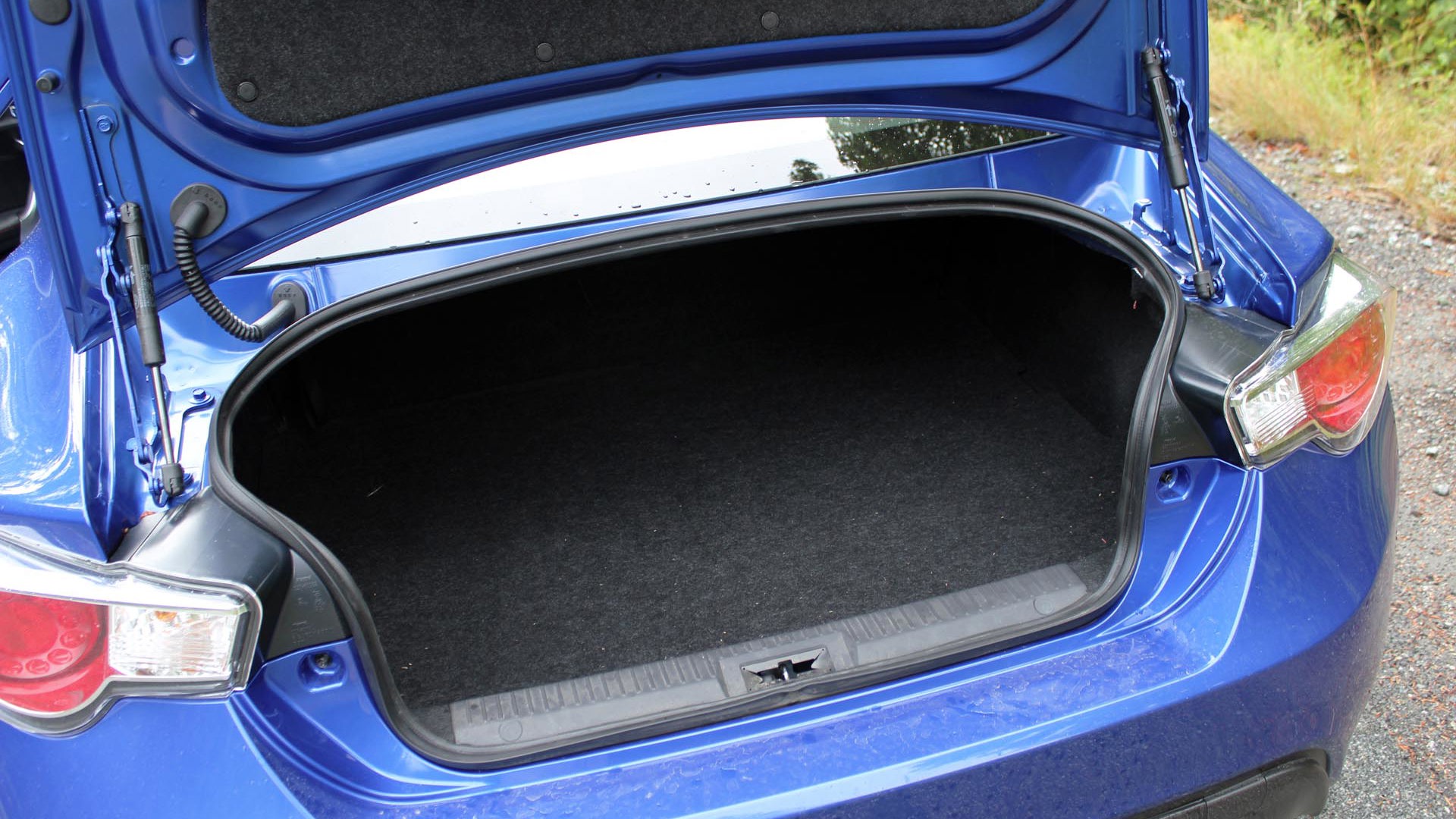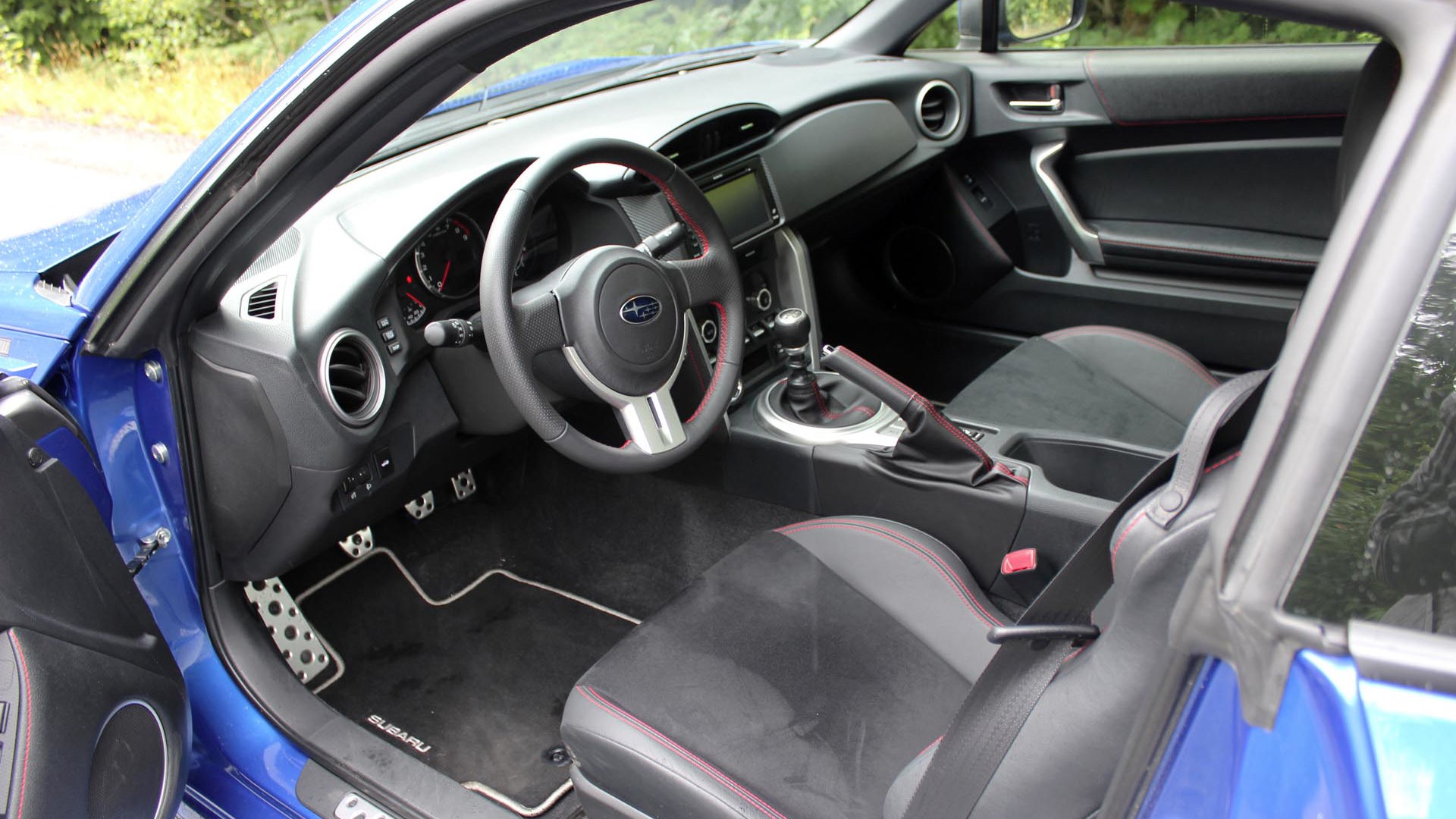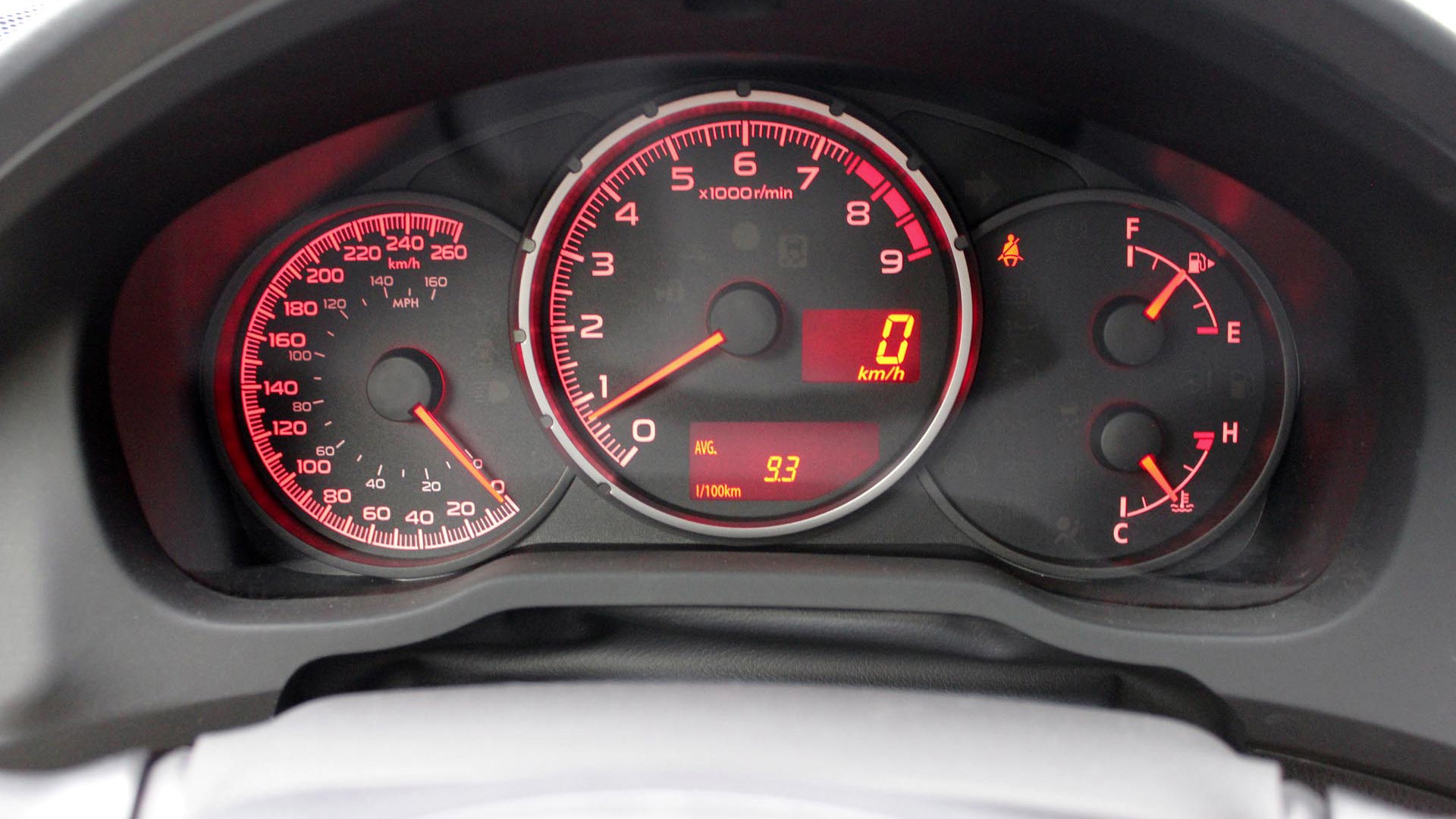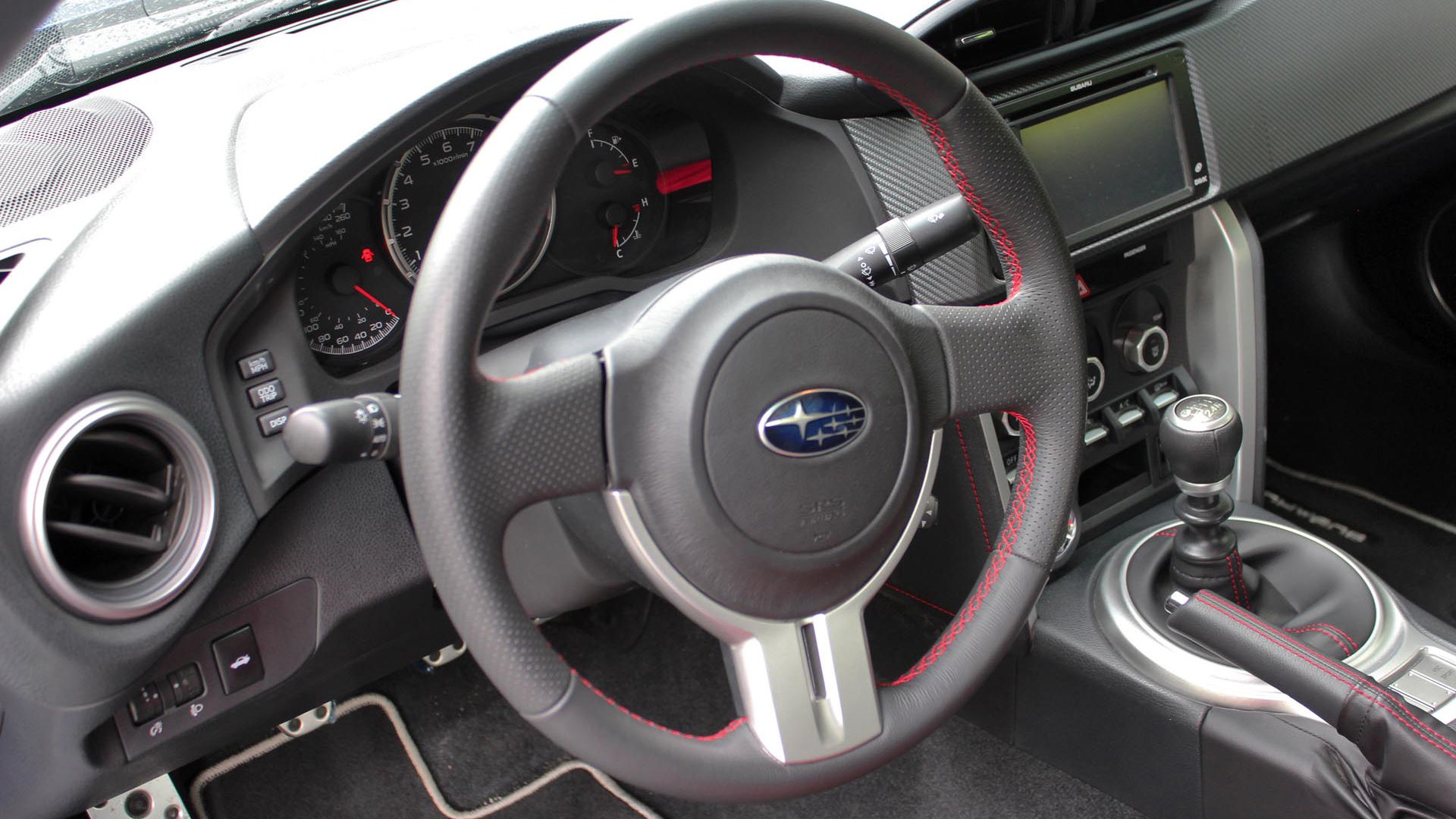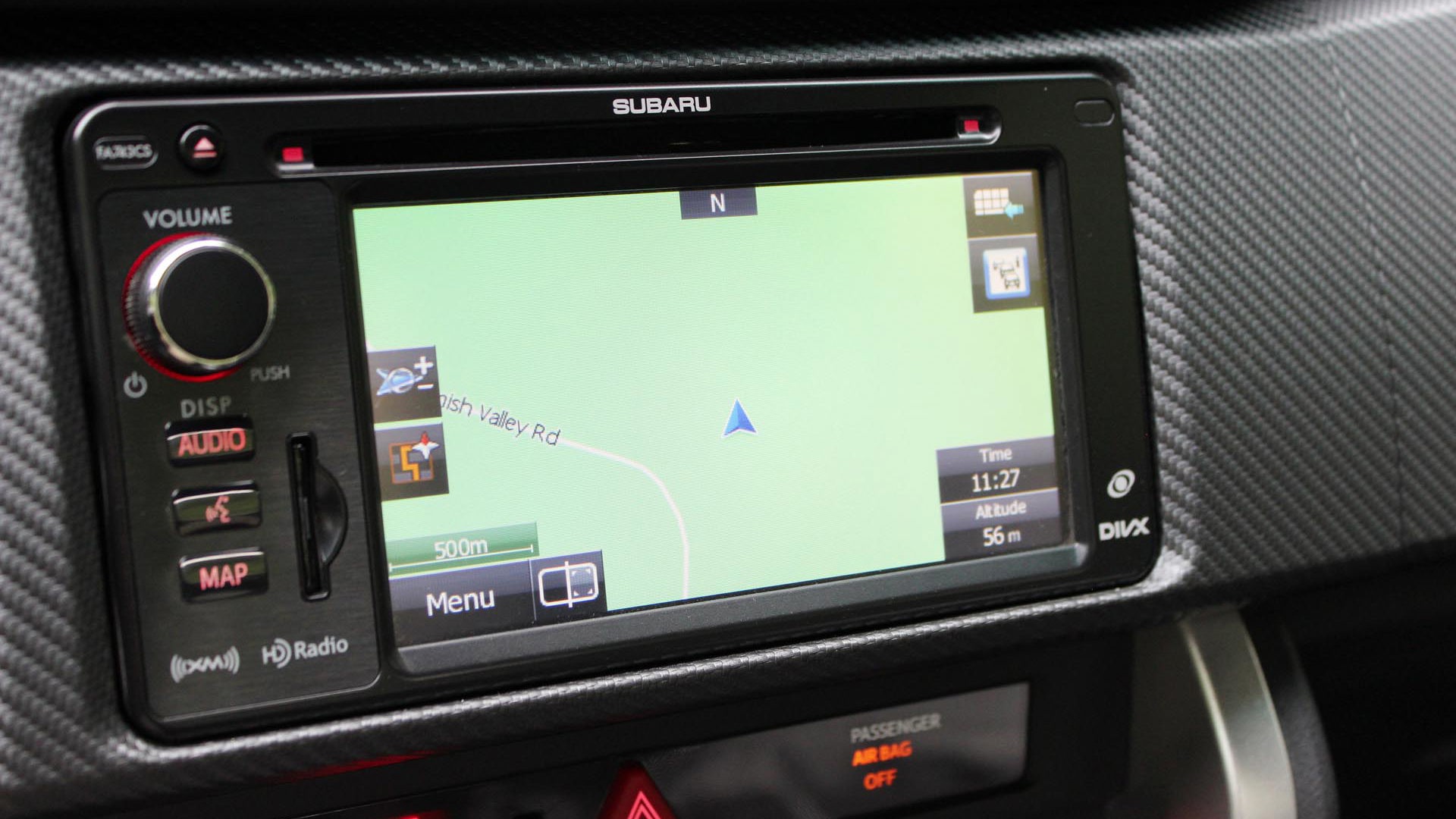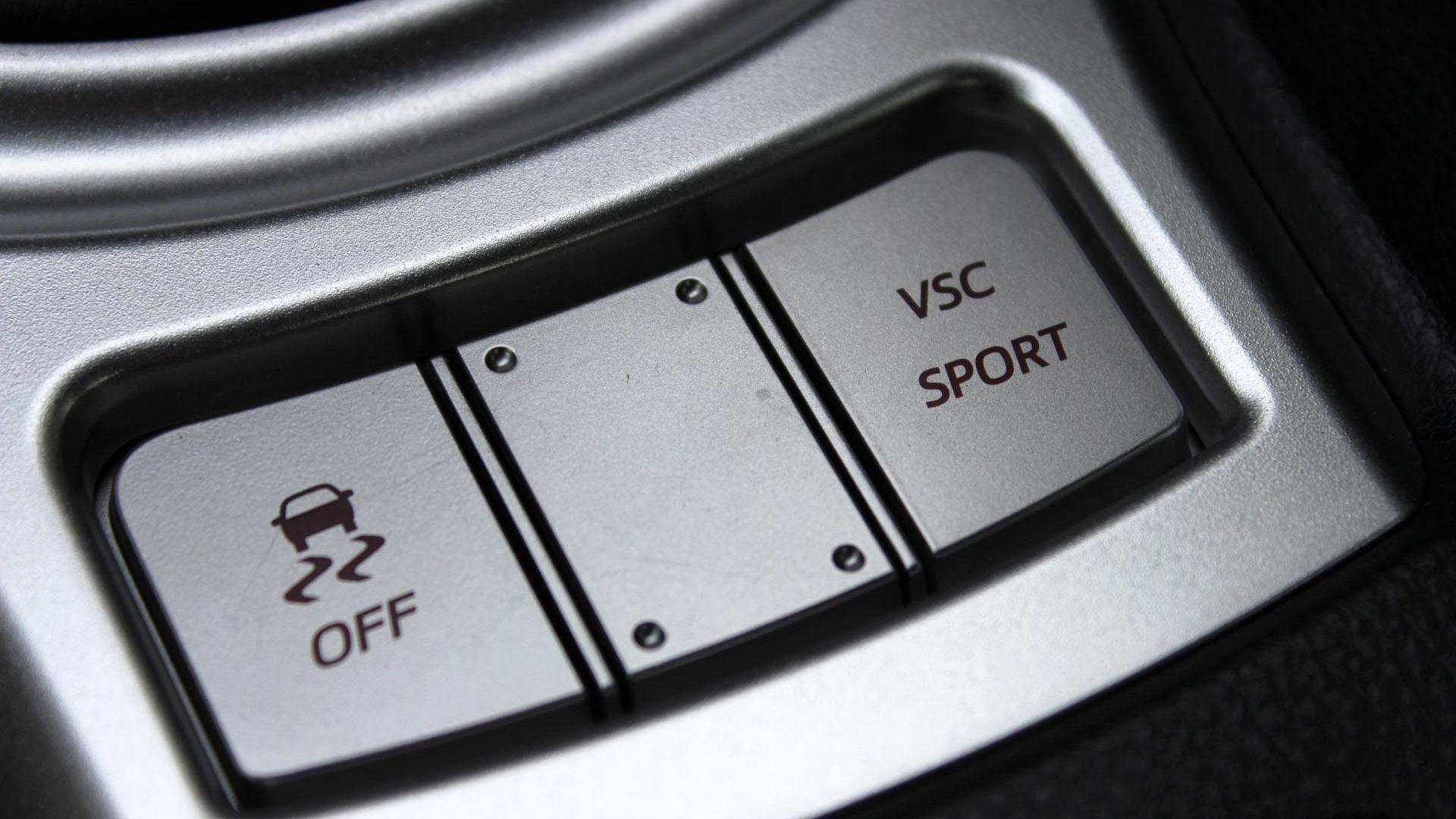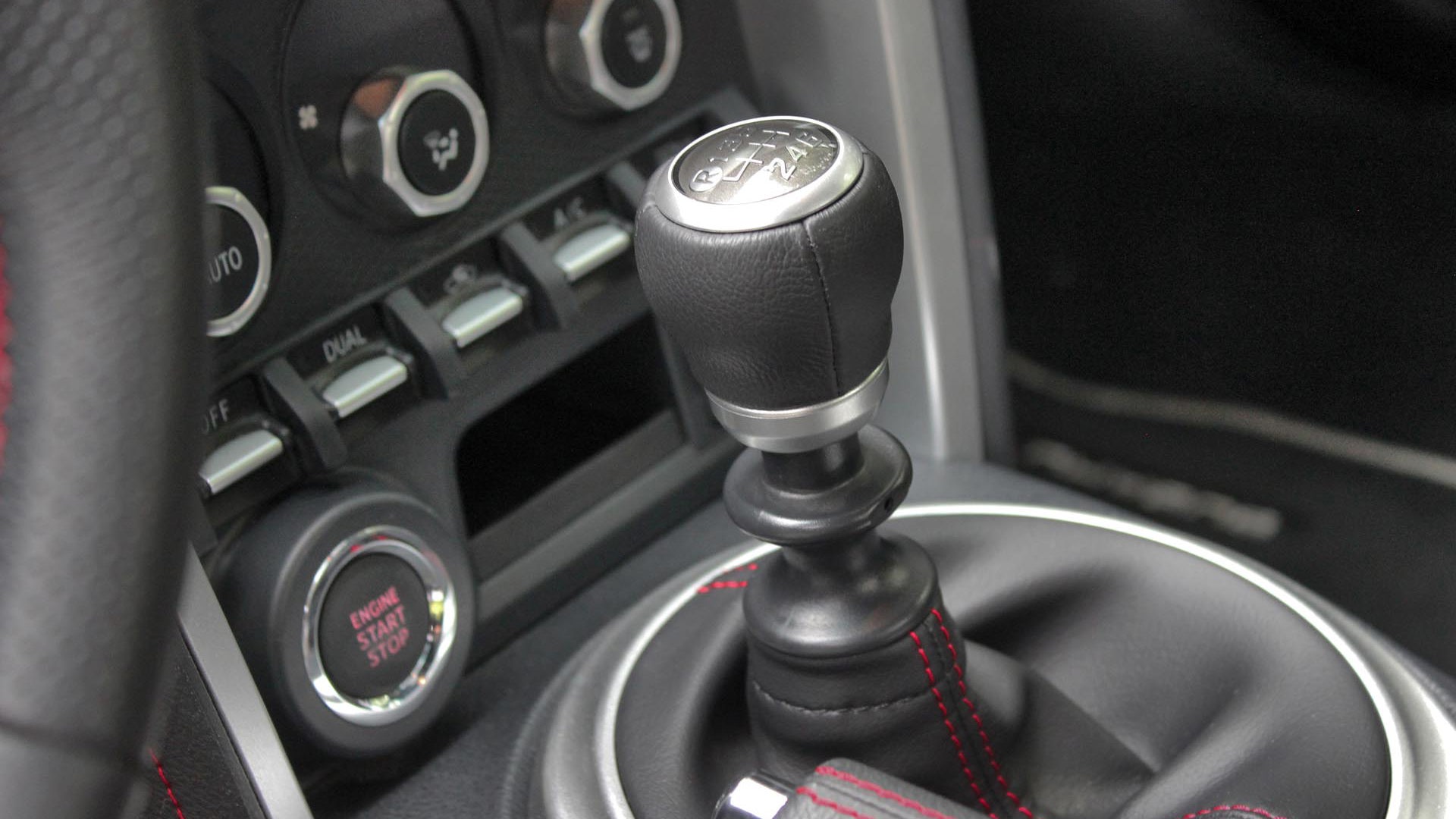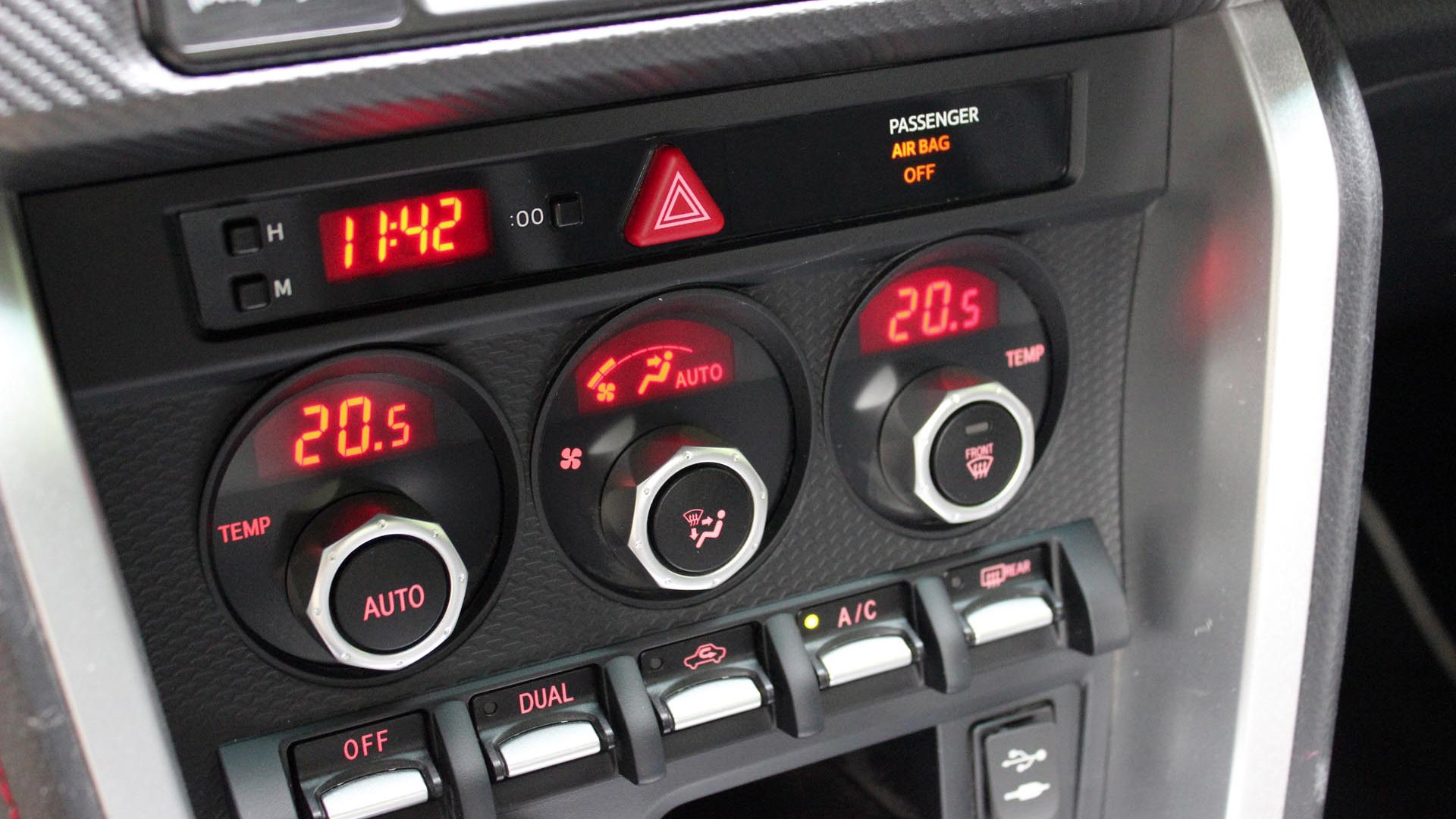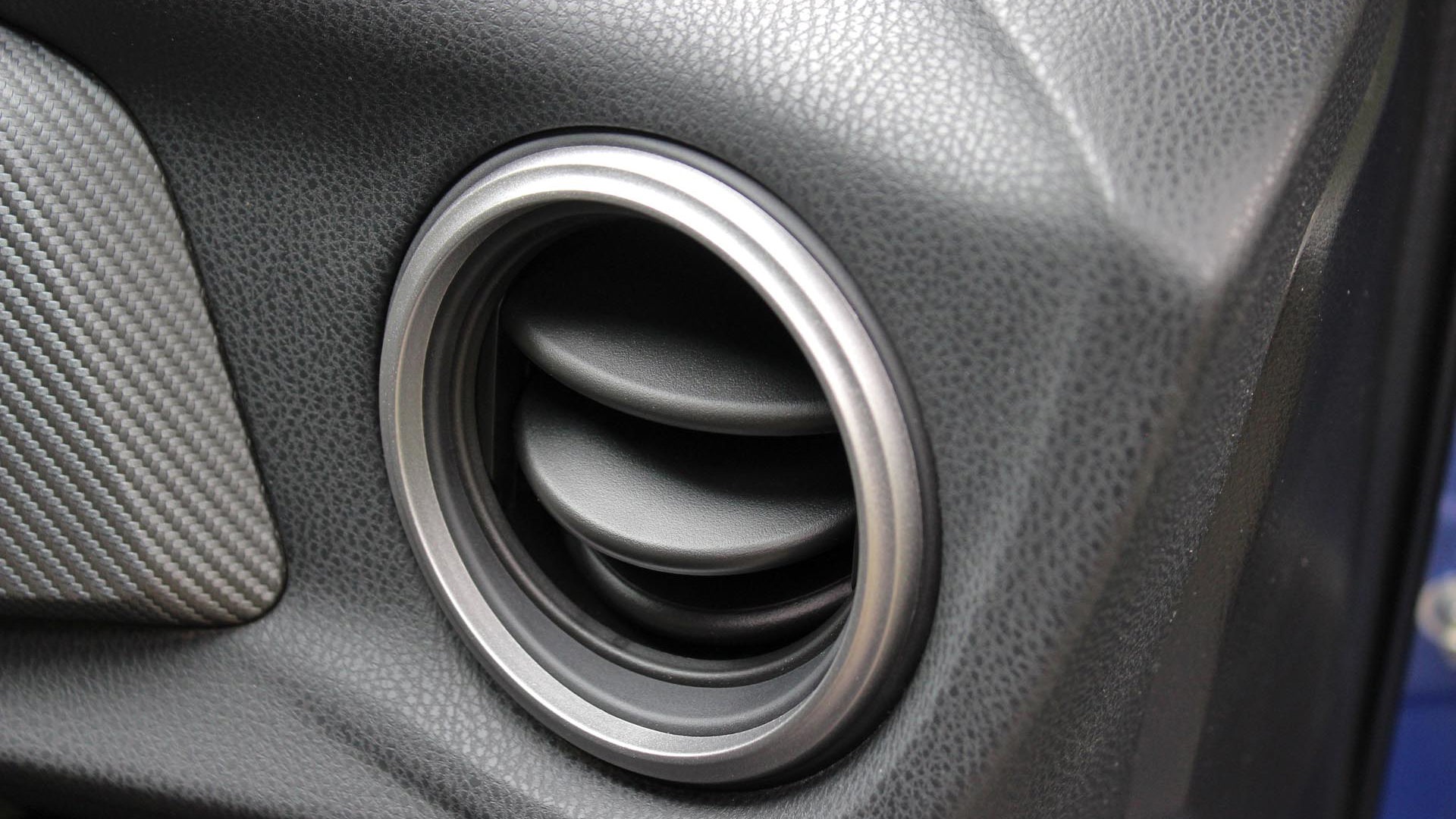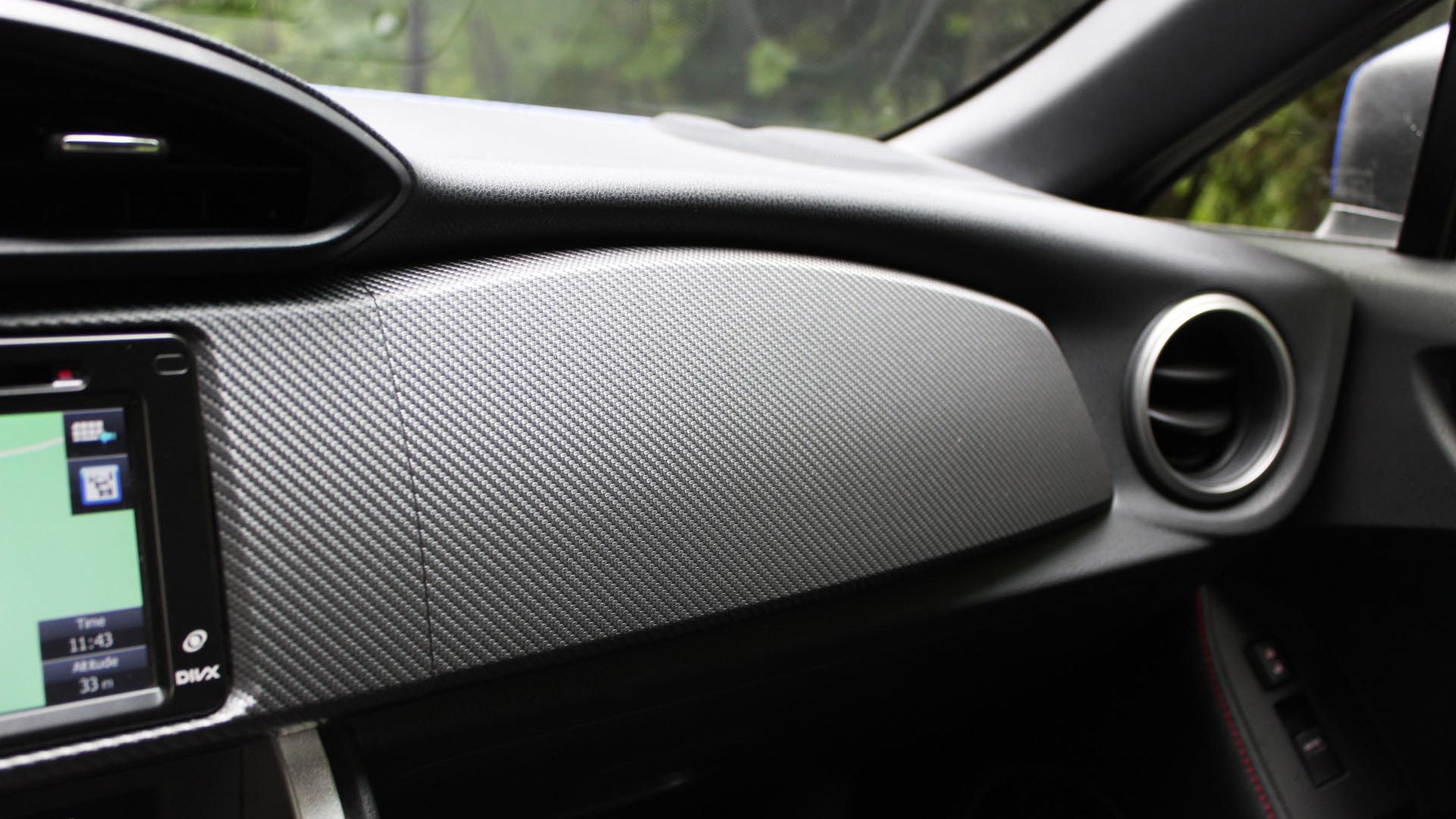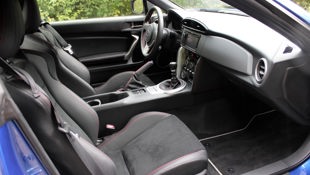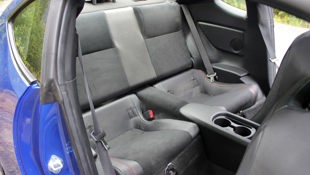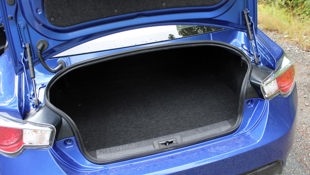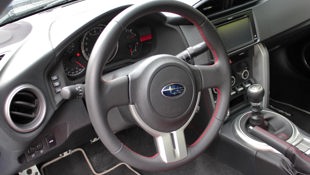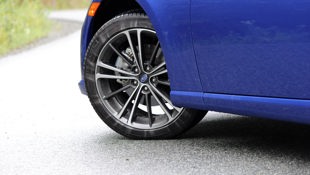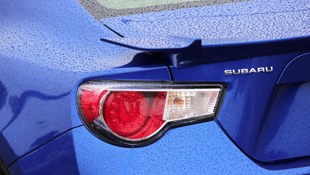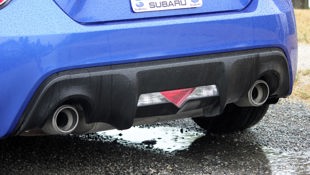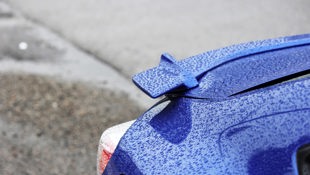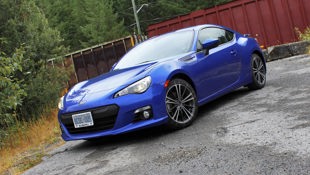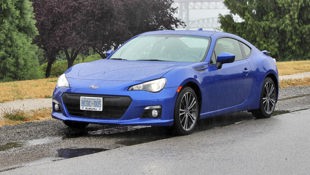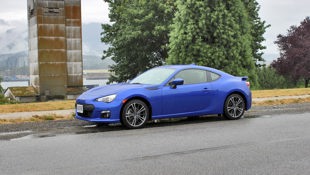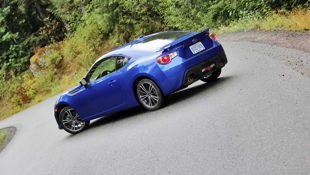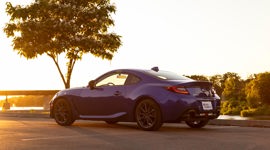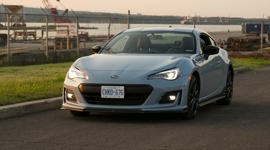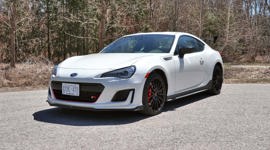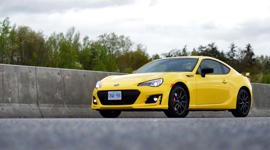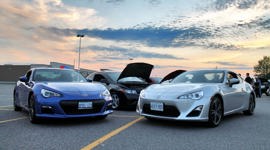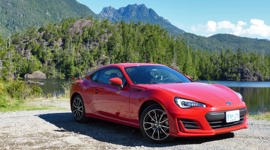 AutoTrader SCORE
AutoTrader SCORE
-
COMFORT8/10
-
PERFORMANCE8/10
-
FUEL ECONOMY8/10
-
INTERIOR9/10
-
EXTERIOR STYLING10/10
So, for our last Big Guy, Small Car installment, we had a first: the first non-car to be featured. Today, we bring you another first, and that’s the first sporty, rear-wheel drive coupe ever to grace this column. As you can see, it’s the Subaru BRZ, which, along with its Scion FR-S cousin (or Toyota GT-86, for all you JDM fanatics out there), was probably one of the interweb’s most-Googled cars in the years leading up to its release.
It’s not quite as much of a circus act as is, say, stepping into a Lotus Exige – but you may want to stretch a little. And, of course, be sure to duck.
That’s because while we’ve always had the Mazda MX-5 (or Miata, far all you American market fanatics and traditionalists out there) for our affordable sporting needs in this part of the world, car enthusiasts are a demanding bunch, and it was time for an alternative. So we got the Toyobaru twins; one manufacturer trading on the name of the classic AE86/Trueno/Corolla to help tickle our collective buying bone, the other trading on its penchant for making affordable, sporting, yet practical cars (of the AWD variety) to help garner interest for its entry.
Considering how the industry is being asked to sway so heavily to reduce carbon emissions, and to try and ensure safer cars with the help all manner of electronic driver aids, it was pretty exciting that we’d have not one, but two new, fun-to-drive, back-to-basics cars to choose from.
The thing was, while there technically were two models, so much of the FR-S/BRZ combo was actually Subaru; the latter was responsible for engineering a lot of the car, most notably the 2.0-litre boxer engine – both cars have “Subaru” and “Toyota” scripts sitting front-and-centre in the engine bay – so really, you kind of have to think that this is the purest of the two models, right? Either way, let’s see how it works for you or the Big Guy in your life.
The Knee Test
At 4,235 millimetres long, 1,775 mm wide and rising just 1,425 mm above the pavement, the BRZ fits comfortably – indeed, snugly – into the Big Guy, Small Car category. You will have to contort yourself just a little to get in – it’s not quite as much of a circus act as is, say, stepping into a Lotus Exige – but you may want to stretch a little. And, of course, be sure to duck.
That’s the first step.
Tiny Turbo: Big Guy, Small Car Test Drive: 2015 Fiat 500 Turbo
After you’ve finished guarding your head against the sting of sheet metal, you have to make sure your knee doesn’t strike the centre console, handbrake or gearlever; no amount of stretching will reduce the sting of that. Luckily, the BRZ comes standard with a pair of deep buckets (which get finished in leather and Alcantara suede if you spec the Sport-Tech package, found on our tester), making it actually easier to slide in there, where you’re met with 1,065 mm of legroom. The whole process is helped by long doors that may be a bit of a hindrance in tight parking stalls, but make for a nice, big opening through which to slither your frame.
Once in, the seating position is a snug, conforming one that has the wheel and gearlever right where you’d want them. At 944 mm, headroom is a bit of a dicier proposition, however; even without a sunroof – an item our car didn’t have, and one you can’t get – the headliner sits perilously close to your scalp. I wouldn’t recommend wearing a hat once inside, I’ll tell you that.
Having said that, the tight headroom is really the main complaint I have when it comes to fitting the BRZ. Yes, the rear seats are hardly present (the claimed 759 mm of rear legroom seems more than a little generous), but really, what more can you expect from a car like this? Still, it would be nice if it was a little easier to access them to use for storage, but thanks to the sloping roofline, that’s not much easier than clambering into the seats themselves. I was hoping the trunk would be big enough so that I wouldn’t need to cram anything behind me. See the next section to find out whether it was or wasn’t.
What you want is a seating position that won’t have you cramping up over the long haul, and while the deep seats may be a little snug for some (I did start feeling the pinch nearing the end of a three-hour drive), there’s very little else to complain about in this regard.
The Hockey Bag Test
So, if you’d rather not have to cram your hockey bag into the back seats, can it at least fit into the trunk? Luckily, it can…barely. The opening is small, there’s only about 190 litres of cargo volume so you’re going to have to cram things in there. I managed to do thread longer items between the front seats and into the back without terribly impeding gear lever access, so that’s a big plus. You do have to be clever with longer items, though.
The Rest
For 2015, all BRZ models get a new gunmetal carbon-fibre interior trim, which looks rather nice and is in keeping with the model’s import tuner vibe. It contrasts well with the red stitching gracing the steering wheel, shift boot, handbrake and seats, but I can’t help thinking that a blue option would be nice to have. Why? Well, the FR-S gets the same treatment, and I know that when I think red, I think “Toyota” before I think “Subaru”, even if the STI models were known for their Cherry Blossom Red trim colour. Which was more of a pink, anyway. The red, for some reason, seems at odds with the blue exterior.
The rest is pretty much a carryover from last year, which isn’t necessarily a bad thing.
The centre console gets a nice treatment; the orange lighting is a little old-school looking, but I’m a fan of the octagonal climate control knobs, under which sit a set of toggle-like switches for your rear defroster, A/C and others. It looks good, but the switches may be a little tougher to reach for the clumsy-fingered among us.
Since our car had the Sport-Tech package, we also got dual-zone climate control which works well, helped in no doubt by the tight confines of the cockpit. We also had heated seats, another Sport-Tech perk.
The 6.1-inch infotainment screen is standard on all BRZs. It’s a little finicky to use due to some smallish buttons both on-screen and astride the display, but you get used to it. And, while there are many different infotainment systems out there with bigger, brighter screens, I like how this one doesn’t dominate the proceedings inside, or hurt your night vision too badly. It’s kind of in keeping with the “techy yet simple” vibe that surrounds the BRZ.
Take the drive controls, for example. In the BRZ, all you have to choose from when considering the drive ahead is the traction control off and VSC Sport buttons. The former’s function is pretty obvious, but the latter’s takes a little more explanation.
Basically, what VSC Sport does is adjust the stability control system to allow for a little more rear-end slip when coming out of corners et cetera. You’ll notice that the traction control light comes on as soon as you select VSC – this is not a problem, but what’s supposed to happen.
So, now that we’ve got that out of the way, we can sit back and enjoy the relatively simple attitude presented by the BRZ, exemplified by the snickety gearlever and nice, thick-rimmed steering wheel through which can be seen the simple orange lighting of the gauge cluster.
I guess the real question before we set off, is whether or not the Sport-Tech package is worth it. It adds nothing in the way of performance, and $2,000 to the basic price ($29,395 plays $27,395 for the base car) but the features it does add (see below) make for some pretty enticing kit nonetheless. Considering that even with Sport-Tech it sits below 30 grand before freight and PDI, I’d say it’s not a bad deal.
Let’s Hit the Road
Why, yes! Why don’t we go ahead and do just that?
Power from the boxer plant is rated at 200 horsepower and 151 lb-ft of torque, both numbers that are down on the competition from the likes of the Nissan 370Z or Volkswagen Golf GTI.
Now, normally, I wouldn’t take issue with losing a bit of power on paper, as there will always be more and less powerful cars.
However, if ever I felt a car required the services of some type of forced induction, this is it. Indeed, the amount of supercharger kits available online, and the various shops and aftermarket tuners (the UK’s Litchfield, for example) that have bolted a supercharger to the little four-banger is testament to this need.
No matter how hard you push it in a straight line, the BRZ just doesn’t feel powerful enough. You will push it, too; peak power comes at 7,000 rpm, peak torque at 6,400-6,600 so you really have to get on it – and stay on it – to extricate the juice. Of course, what this means is that if you drive it in anger on the regular, you’re going to get hit at the pump, double so because it requires premium fuel.
It’s strange; you’ve got this fantastic seating position, these great-feeling controls that have you ready to dart from point A to B, but you just never get that push in the back, that shot of life that you’re expecting to fire you down the road. At least it sounds good while you’re at it; the familiar flat-four warble that’s emanated from WRXs and STIs over the years returns here; it’s not quite as extreme as can be seen from those examples, yet it remains distinctive and unlike pretty much anything else out there.
You can achieve some pretty miserly fuel economy, figures, though; by keeping it just this side of “on-boil” for most of our test, we saw 9.0 L/100 km, which isn’t too bad. I just wonder how many folks that buy a performance-lite car like this are ever going to be able to demonstrate the restraint required to achieve those figures.
Where we just had to throw restraint out the window, however, was when it came to the twistier bits of our favorite roads. If a performance car isn’t going to blow you away to the quarter-mile marker, then it had better have something to offer when the road gets a little more serpentine.
The BRZ, for its part, does just that.
It starts with steering feel, which is pretty granular. It’s not perfect, but it’s well-weighted and you really do get the feeling that you’re piloting as precise a scalpel as you’ll find – at this price level, anyway – in the automotive market today.
Turn in is right-on, sending that slightly long nose to the apex lickety-split, and readying itself to do it again 50 metres down the road. The rack is helped along by a nicely composed chassis; the front MacPherson strut set-up and rear double wishbone suspension does its part to push the BRZ firmly to the tarmac, and smart damper settings mean it doesn’t feel too bad over nasty bumps, either.
If there’s one area where the handling package starts to show some kinks, it’s in the tire department.
Like the FR-S, the BRZ rides on Michelin Primacy HP tires that are built to provide a comfortable ride, and not necessarily the stickiest one. More than simply a recipe for some less-than-stellar grip levels, it could be a recipe for disaster.
Of course, the humble power figures mean that it takes a little more throttle or higher corner entry speeds to overpower the tires than it might otherwise, but I found myself chirping the tires way sooner than I expected on numerous start-up occasions. And we’re not talking slick uphill climbs here. We’re talking dry roads with moderate inclines.
Luckily, as backwards as it sounds, I wouldn’t say that I lacked confidence in the bends. Maybe it’s because you aren’t going that fast, maybe it’s because the steering is so nice and communicative; either way, the tire issues really only gave me pause when setting off. Otherwise, the steering is precise, the handling taut and the BRZ an engaging ride because of it.
So if You’re of Taller Ilk…
…and don’t mind taking a little while longer to get to 100 km/h or packing a slimmer suitcase, go ahead. Give the BRZ a shot. It’s an able handler, it looks fantastic, the bare-bones-but-not-quite-bare-bones cockpit is a (mostly) nice place to be and you gotta love the sound made by the flat-four.
The trouble for Big Guys, however, is that there are bigger, more-powerful cars out there – think Hyundai Genesis or Ford Mustang, especially the new turbo’d one--that get you more power and room for similar money. There are the super-fans out there; those that love the idea of the boxer engine, the nice, light RWD layout and the taut controls and either this or the FR-S are all they want. If you’re not one of them, however, be sure to vet the competition before buy one of these, Big Guy or not.
NRCan Fuel Consumption: 10.9/7.9 L/100 km City/Highway
Observed Fuel Consumption: 9.0 L/100 km
| Warranty: 3 years/60,000 km; 5 years/100,000 km powertrain; 5 years/unlimited distance corrosion perforation; 3 years/unlimited distance roadside assistance Competitors: |
| Model Tested | 2015 Subaru BRZ |
|---|---|
| Base Price | $27,395 |
| A/C Tax | NA |
| Destination Fee | $1,650 |
| Price as Tested | $31,045 |
|
Optional Equipment
$2,000 Sport-Tech Package: Trunk spoiler, fog lights, heated front seats, dual-zone automatic climate control, leather and Alcantara suede seating surfaces, illuminated visor mirrors, front door courtesy light, proximity key with push-button start
|
|
